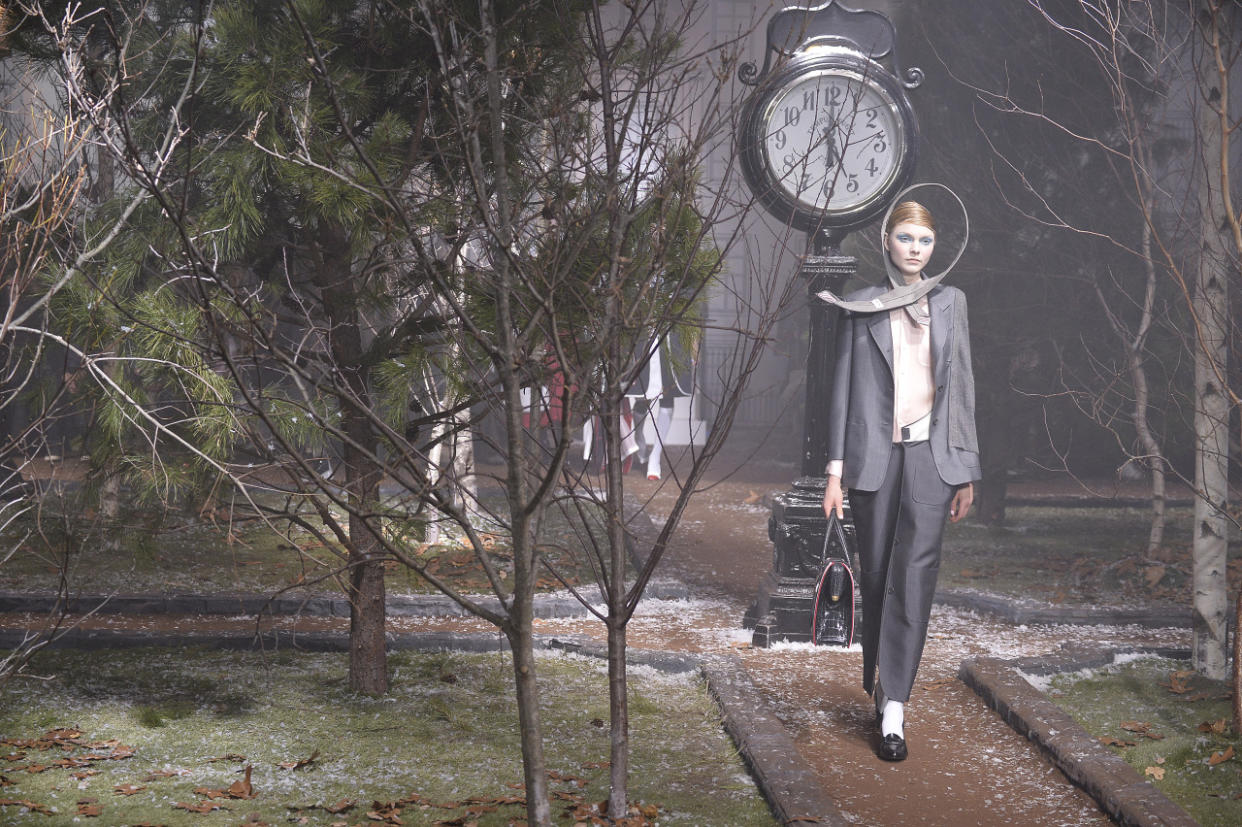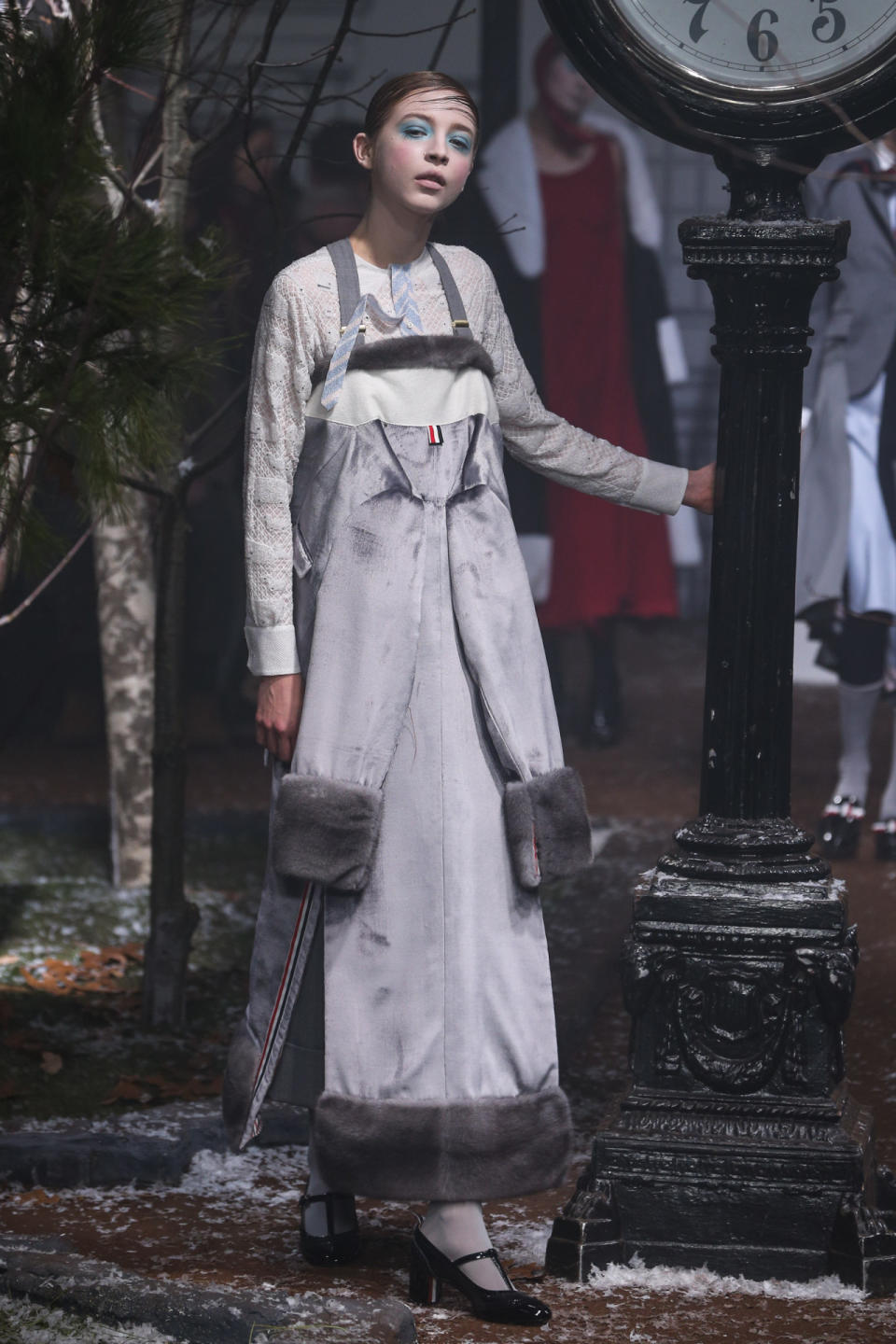Thom Browne Goes Old-School

Photo: Getty Images
At last night’s show, a small park was built inside Thom Browne’s venue. Not a lush park full of greenery, flowers, and live animals, as we’ve seen in other presentations by Brother Vellies (butterflies) and Mathieu Mirano (turtles) this week, but a mostly dead one. Naked trees whose leaves have fallen to the ground, a few benches, a bit of fake snow — which wouldn’t have been necessary given the winter onslaught outside. There was something vaguely British about the whole setting, the eery calmness, the tidiness — and the absence of anyone playing Hacky Sack on the lawn.
Soon the crowd was “shushed,” and a slow piano melody started playing. Two young men came out in gray bowler hats, tiny round sunglasses and matching little suits, one carrying a umbrella, the other a stuffed leather dog on wheels, their faces painted white like death, their lips black. They took a seat on one of the park benches, and thus the show commenced.
The first look, a model in a red, washed-silk dress with an embroidered overlay depicting breasts, a red-silk tie turned chapeau perfectly hugged her face — like a heavy wind caught a gentleman off-guard and then it ever so carefully turned it into a hat — paraded around the set and then leaned on one of the lampposts seductively, her fur-lined coat draping off her shoulder just so. An Edwardian girl of the night. The next two models, both in decidedly deconstructed menswear looks, half tuxedo-half clown, walked hand in hand, and made eyes at our red-dress temptress, still leaning against the lamppost, checking out all the action.

Photo: Getty Images
The models continued to walk onstage wearing a variety of collaged garments: two jackets stitched together and turned into a dress, a lapel and half sleeve still hanging uselessly from the center back, a gray dress and matching jacket constructed of what looked like pant leg pieces, which were sometimes trimmed with pearls. As the show progressed, the clothes got more complicated, jackets pieced together with dresses, skirts with different hemlines, a dress made out of what looked like a pair of silk trousers worn inside out with suspenders. It seemed like the fight for women’s liberation was being played out in the garments before us. The men’s fear of losing their masculinity was symbolized by their ties becoming a superfluous accessory in the hands of women, who wore them around their head.
While other designers continue to explore the vast treasure trove that is ’90s youth culture, Browne seems to be obsessed with the early 20th century, the years when, much like right now, culture and society were going through a seismic change.

